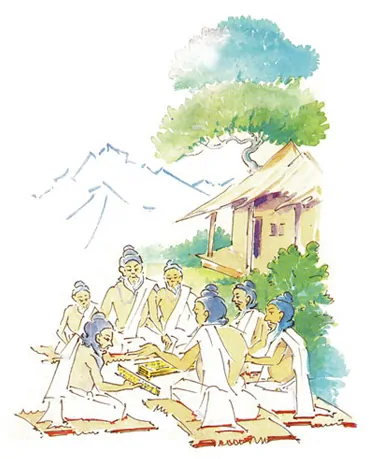Ayurveda’s rich history traces its origins back to the era of the sacred Vedas, the foundational texts of ancient Indian wisdom. According to ancient mythology, the knowledge of Ayurveda was imparted by Lord Brahma, revered as the creator of the universe. Among the four primary Vedas – Rigveda, Yajurveda, Samaveda, and Atharvaveda – it is the Atharvaveda, in particular, that delves extensively into medical knowledge. These texts, composed between 3,000 to 5,000 years ago, encapsulate the principles of Ayurveda, providing a comprehensive understanding of this ancient medical system. The Vedas not only serve as a spiritual guide but also as a historical testament to the depth and origins of Ayurvedic medicine.

The hymns, literal formulas, and medical knowledge of Vedas were contributions of Rishi and Munis of different times. It is well known that Rishi and Munis were learned sages and saints who devoted their lives to understanding the reality of the world. Aryavarta, the native land of Aryans, covers the wide surrounding area of the Himalayas where the Rishi and Munis lived. The surrounding area of the Himalayas where the Rishi and Munis lived. The surrounding area of the Himalayas, at present political situation, covers the countries Nepal, India, Pakistan, Bhutan, Bangladesh, Srilanka, Tibet etc. The civilization of these countries is deeply influenced by the unique intellectual contributions of the Rishis and Munis.
Time has passed in the wave of history, and the glory of Ayurveda, no doubt, is badly affected by natural and human disasters. The intellectual schools run by the renowned Rishis and Munis remained only in the domestic families of Vaidyas. Many valuable manuscripts mentioned in the different Ayurvedic schools have disappeared. Divine plants used for long life and good health are eradicated. Many renowned families of specialized Vaidyas could not stand to run their traditions, Besides all these negative conditions, the positive value of Ayurveda is not affected as yet, because, the principle of Ayurveda is based on the universal truth. And Ayurveda is an intellectual gift of ancient human civilization.
Astanga Ayurveda
Ayurveda, in its practical application, is categorized into eight distinct branches or specialties. These include internal medicine, surgery, treatment of diseases related to the head and cranial organs, pediatrics, toxicology, methods for rejuvenation, aphrodisiac treatments, and spiritual healing. Collectively, these diverse areas of Ayurvedic practice are known as “Astanga Ayurveda,” which translates to the “eight limbs of Ayurveda.” This classification underscores the comprehensive and holistic approach of Ayurveda in addressing various aspects of health and well-being.
- Spiritual Healing
- Toxicology
- Aphrodisiac Remedy
- Pediatrics
- Surgery
- Internal Medicine
- Rejuvenating Remedy Aphrodisiac
- Cranial Organo Medicine








Ayurvedic Plants found in Nepal
Nepal’s rich biodiversity includes an abundance of Ayurvedic plants, each with unique healing properties. Among them, the Greater Cardamom is renowned for its digestive benefits, while Tanduliyakam is celebrated for its therapeutic qualities. The Dita Bark offers medicinal properties crucial for various treatments, and the Aloe plant is universally known for its skin healing and soothing effects. Jivaka is another notable herb in the Ayurvedic repertoire, prized for its rejuvenating qualities. Additionally, the Siris tree stands out for its wide range of uses in traditional medicine. These plants are just a few examples of Nepal’s rich herbal heritage, playing a vital role in Ayurvedic healing practices.















